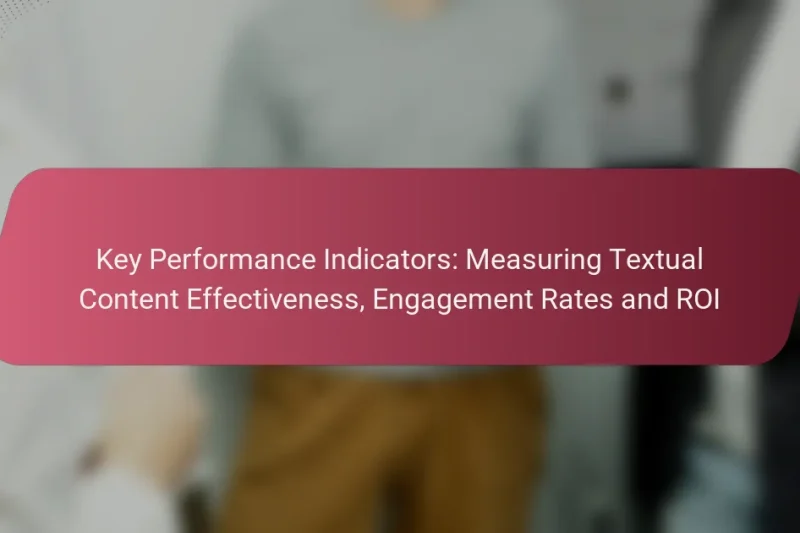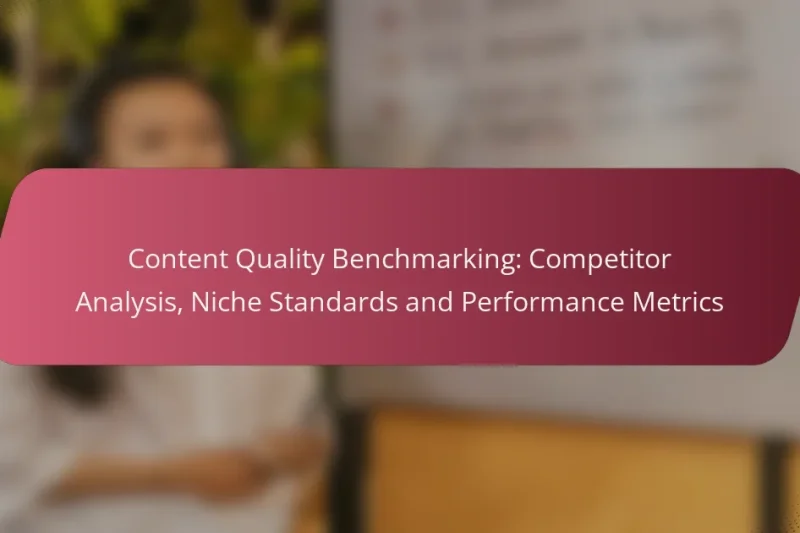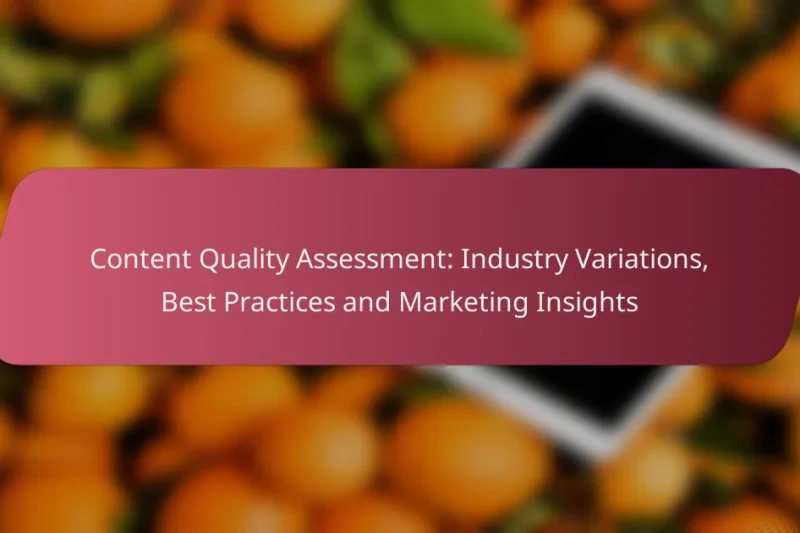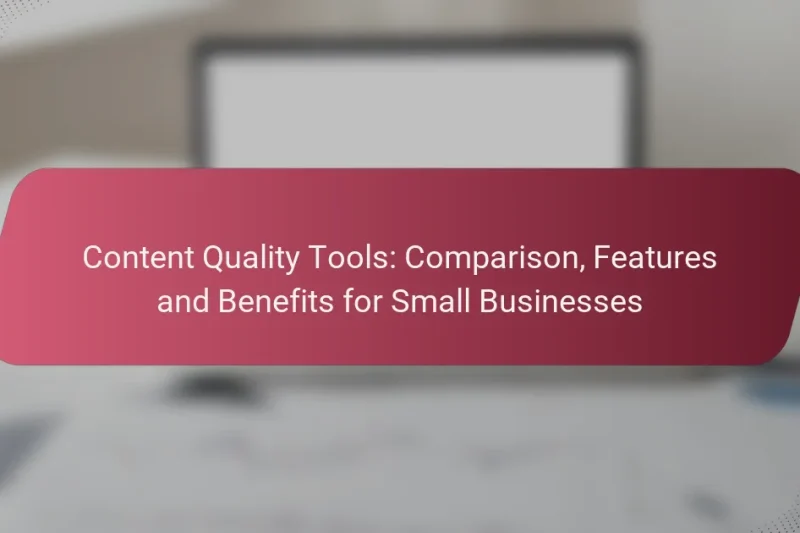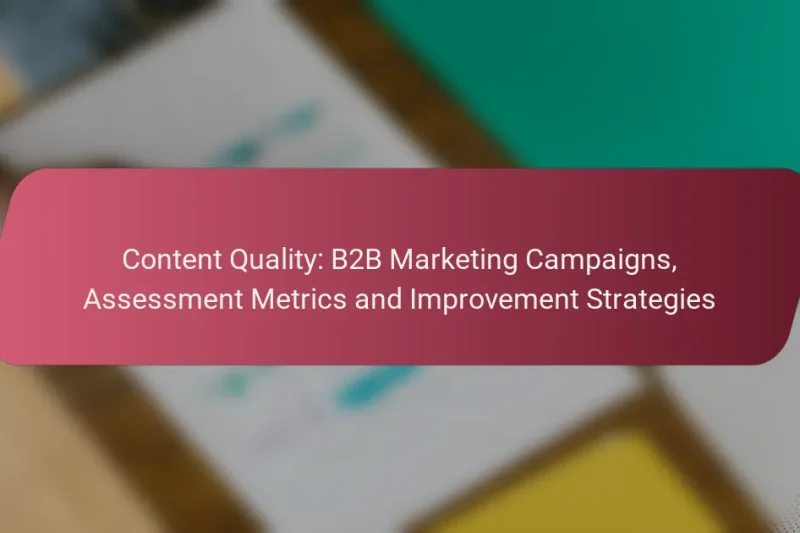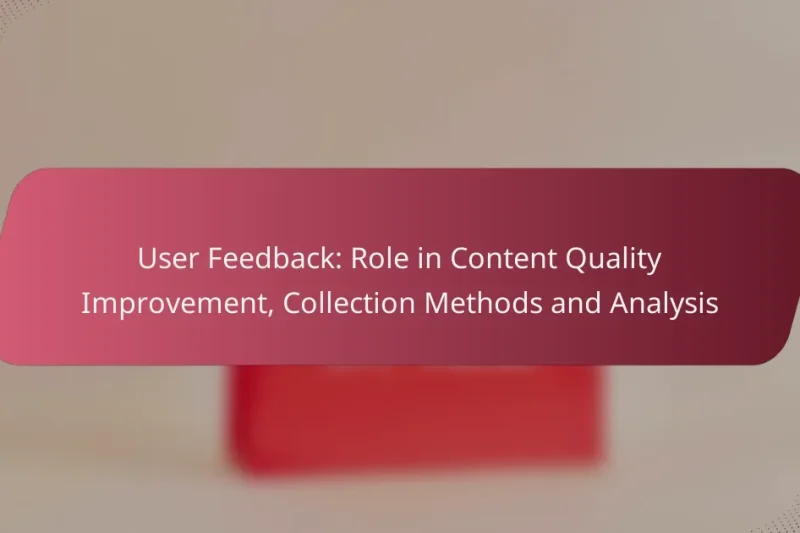Readability scores play a crucial role in enhancing customer engagement by ensuring that content is accessible … Readability Scores: Enhancing Customer Engagement, Clarity and RetentionRead more
Content Quality Assessment
Content quality assessment is essential for creating effective and engaging material that resonates with your audience. By focusing on factors such as readability, SEO optimization, and originality, you can enhance the impact of your content. Implementing best practices and utilizing various tools can ensure your writing meets high standards and achieves its intended purpose.
Key Performance Indicators: Measuring Textual Content Effectiveness, Engagement Rates and ROI
Key Performance Indicators (KPIs) are essential for measuring the effectiveness of textual content, as they provide … Key Performance Indicators: Measuring Textual Content Effectiveness, Engagement Rates and ROIRead more
Content Quality Benchmarking: Competitor Analysis, Niche Standards and Performance Metrics
Content quality benchmarking is essential for understanding how your content stacks up against competitors in your … Content Quality Benchmarking: Competitor Analysis, Niche Standards and Performance MetricsRead more
Content Quality Assessment: Industry Variations, Best Practices and Marketing Insights
Content quality assessment is crucial in marketing, focusing on how effectively content engages audiences and prompts … Content Quality Assessment: Industry Variations, Best Practices and Marketing InsightsRead more
Content Quality Tools: Comparison, Features and Benefits for Small Businesses
For small businesses looking to improve their online presence, content quality tools are essential for enhancing … Content Quality Tools: Comparison, Features and Benefits for Small BusinessesRead more
Content Quality: B2B Marketing Campaigns, Assessment Metrics and Improvement Strategies
In B2B marketing, assessing content quality is crucial for determining how effectively it meets business objectives. … Content Quality: B2B Marketing Campaigns, Assessment Metrics and Improvement StrategiesRead more
User Feedback: Role in Content Quality Improvement, Collection Methods and Analysis
User feedback is essential for improving content quality, offering valuable insights from the audience that highlight … User Feedback: Role in Content Quality Improvement, Collection Methods and AnalysisRead more
What are the best practices for content quality assessment?
Best practices for content quality assessment focus on ensuring readability, SEO optimization, engagement, originality, and expert evaluation. Implementing these practices can significantly enhance the effectiveness and reach of your content.
Use of readability scores
Readability scores evaluate how easy your content is to read and understand. Tools like the Flesch-Kincaid Grade Level or Gunning Fog Index can provide insights into the complexity of your text.
Aim for a score that matches your target audience’s reading level; for general audiences, a score indicating a grade level of 8-10 is often effective. Avoid overly complex language that may alienate readers.
Incorporate SEO guidelines
SEO guidelines are crucial for improving the visibility of your content in search engines. This includes using relevant keywords, optimizing meta tags, and ensuring proper use of headings.
Focus on keyword placement within the first 100 words and maintain a keyword density of around 1-2%. Additionally, ensure your content is structured with clear headings and subheadings to enhance both readability and SEO performance.
Engagement metrics analysis
Engagement metrics, such as bounce rate, time on page, and social shares, provide insights into how well your content resonates with readers. Analyzing these metrics helps identify areas for improvement.
For instance, a high bounce rate may indicate that your content is not meeting user expectations. Aim for a time on page of at least 2-3 minutes to suggest that readers are finding value in your content.
Content originality checks
Ensuring content originality is vital to maintain credibility and avoid plagiarism issues. Tools like Copyscape or Grammarly can help verify that your content is unique.
Strive for a uniqueness score of 90% or higher to ensure your work stands out. Regularly updating and refreshing content can also help maintain originality and relevance.
Expert reviews
Expert reviews involve having knowledgeable individuals evaluate your content for accuracy, depth, and relevance. This can be particularly important in specialized fields where expertise is crucial.
Consider forming a panel of experts or soliciting feedback from industry professionals. Their insights can help refine your content and ensure it meets high-quality standards.
How to evaluate content quality effectively?
Evaluating content quality involves assessing its relevance, accuracy, and engagement level. Effective evaluation ensures that the content meets the intended purpose and resonates with the target audience.
Define clear evaluation criteria
Establishing clear evaluation criteria is essential for consistent content assessment. Criteria may include factors such as relevance to the topic, clarity of expression, depth of information, and adherence to brand voice.
Consider using a scoring system to rate each criterion on a scale, such as 1 to 5. This approach allows for quantifiable comparisons and highlights areas needing improvement.
Utilize content audit tools
Content audit tools can streamline the evaluation process by providing insights into performance metrics. Tools like Google Analytics and SEMrush help track engagement metrics such as page views, bounce rates, and average time on page.
Using these tools, you can identify which content resonates with your audience and which pieces may require updates or removal. Regular audits can help maintain content quality over time.
Conduct peer reviews
Peer reviews involve having colleagues or subject matter experts evaluate the content for quality and accuracy. This collaborative approach brings fresh perspectives and can uncover blind spots that the original creator may have missed.
Set guidelines for feedback to ensure it is constructive and focused. Encourage reviewers to assess clarity, factual accuracy, and overall engagement to enhance the content’s effectiveness.
What tools can assist in content quality assessment?
Several tools can enhance content quality assessment by focusing on grammar, optimization, and originality. Utilizing these tools can help ensure that your content meets high standards for readability, SEO, and plagiarism-free writing.
Grammarly for grammar checks
Grammarly is a widely used tool that checks for grammatical errors, punctuation mistakes, and style issues in your writing. It provides real-time suggestions, allowing you to make corrections as you write, which can significantly improve the clarity and professionalism of your content.
When using Grammarly, consider its premium features for advanced checks, including tone detection and vocabulary enhancement suggestions. This can be particularly useful for tailoring your content to specific audiences or purposes.
Yoast SEO for optimization
Yoast SEO is a popular plugin for WordPress that helps optimize content for search engines. It evaluates your text based on various SEO factors, such as keyword usage, readability, and meta descriptions, ensuring that your content is not only engaging but also discoverable.
To effectively use Yoast SEO, focus on its traffic light system, which provides immediate feedback on how to improve your content. Aim for a green light, indicating that your content meets all the necessary SEO criteria, which can enhance your visibility online.
Copyscape for plagiarism detection
Copyscape is a tool designed to detect plagiarism by comparing your content against a vast database of online material. This ensures that your writing is original and free from unintentional copying, which is crucial for maintaining credibility and avoiding copyright issues.
When using Copyscape, consider running your text through the tool before publication. This can help identify any similarities with existing content, allowing you to make necessary adjustments and uphold the integrity of your work.
How does content quality impact SEO rankings?
Content quality significantly affects SEO rankings by influencing how search engines evaluate and rank web pages. High-quality content is more likely to engage users, leading to better visibility and higher placements in search results.
High-quality content boosts rankings
High-quality content enhances SEO rankings by providing valuable information that meets user intent. Search engines prioritize content that is well-researched, informative, and relevant, which can lead to increased organic traffic.
To improve content quality, focus on creating comprehensive articles that address specific topics in depth. Use clear headings, bullet points, and visuals to enhance readability and engagement.
Poor quality leads to higher bounce rates
Poor-quality content often results in higher bounce rates, as users quickly leave pages that do not meet their expectations. When visitors find content that is poorly written, irrelevant, or lacking in substance, they are less likely to stay on the site.
To avoid high bounce rates, ensure that your content is engaging and provides real value. Regularly update and refine existing content to maintain its relevance and quality, keeping your audience engaged and encouraging them to explore more of your site.
What are the common pitfalls in content quality assessment?
Common pitfalls in content quality assessment include failing to align with user intent, neglecting mobile optimization, and not regularly updating content. Addressing these issues is crucial for maintaining high-quality content that meets user needs and performs well across platforms.
Neglecting user intent
Neglecting user intent can lead to content that does not resonate with your audience. Understanding what users are searching for and why is essential for creating relevant and engaging material. Conduct keyword research and analyze user behavior to align your content with their expectations.
To avoid this pitfall, consider creating user personas and mapping their journey. This helps in tailoring content that addresses specific needs and questions, ultimately enhancing user satisfaction and engagement.
Overlooking mobile optimization
Overlooking mobile optimization can significantly hinder content accessibility and user experience. With a large portion of web traffic coming from mobile devices, it is vital to ensure that content is easily viewable and navigable on smaller screens. This includes responsive design, fast loading times, and mobile-friendly layouts.
Utilize tools like Google’s Mobile-Friendly Test to evaluate your content’s performance on mobile. Aim for a loading time of under three seconds to reduce bounce rates and improve user retention.
Ignoring content updates
Ignoring content updates can result in outdated information that misleads users and diminishes credibility. Regularly reviewing and refreshing content ensures that it remains relevant and accurate, which is particularly important for topics that evolve quickly, such as technology or regulations.
Establish a content audit schedule, ideally every six months, to assess the relevance and accuracy of your material. This proactive approach helps maintain high content quality and keeps your audience informed with the latest information.

